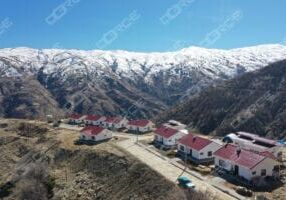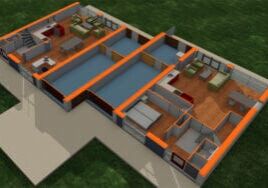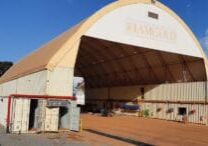Modular Architecture: Thinking Outside of the Box with Sara.Ann Logan
It might seem strange to use the term “out of the box thinking” in the modular construction world, but when you’re talking about Sara.Ann Logan, the VP of design at Volumetric Building Companies, the phrase fits like a glove.
Originally from Jamaica and now a naturalized citizen, Logan has built a career on curiosity, innovative thinking, and being solutions-driven. She’s thrived on the juxtaposition of tradition and innovation, and it turns out that’s precisely what cutting-edge design in the modular building world demands.
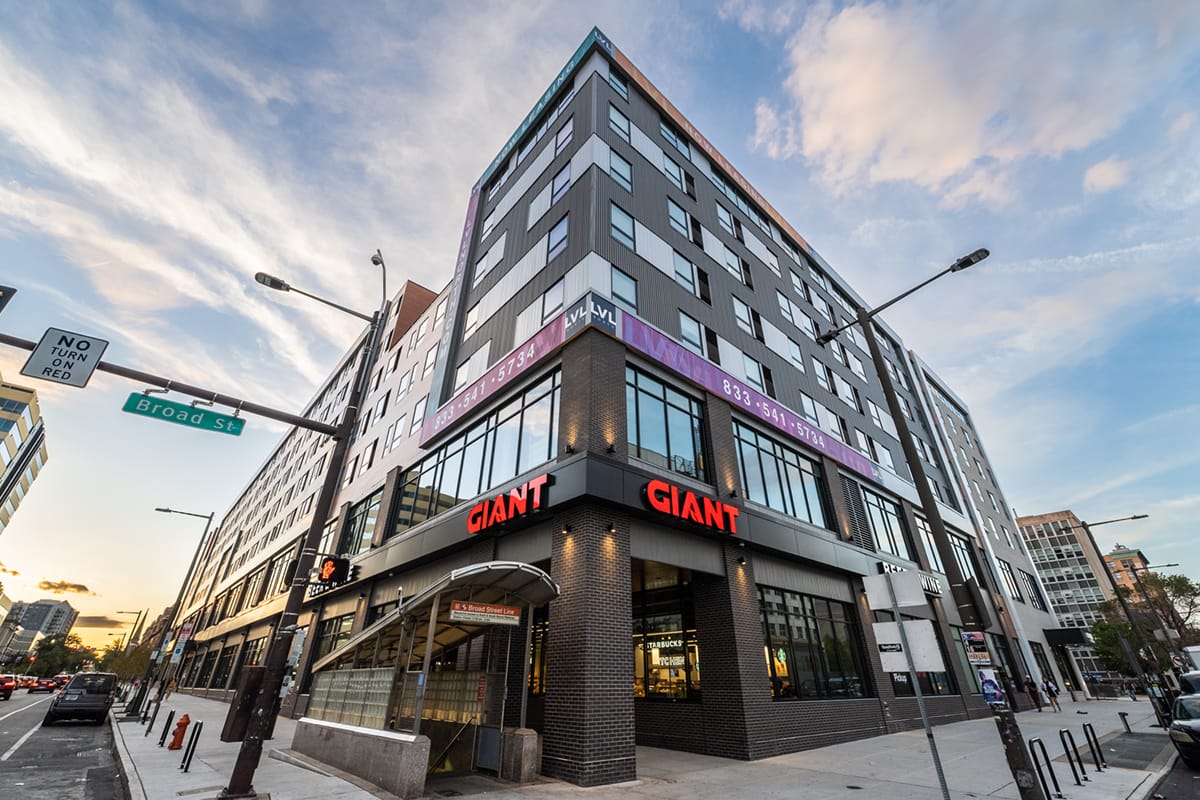
Broad Street Apartments – Hybrid (Modular + Traditional) Design Build. Photo Courtesy of VBC
Varied Early Interests
Many people don’t decide what they want to do with their lives until much later, but in Logan’s case, clarity came early, and by the time she was in middle school, she was already focused on the built environment. But architecture wasn’t always the obvious choice. In fact, it was one of three career paths she was considering in middle school – the other two being law and computer science, or, as she puts it, “I always loved building, I always loved arguing, and I always loved coding, so I knew it was going to be one of those three.”
While law fell by the wayside, architecture and computer technology did not, and they both became the foundation for a career that straddles the line between adhering to traditional best practices and forging new, innovative paths.
Logan also traveled extensively and lived and worked in diverse places, both inside and outside of the United States, all of which fueled her desire to understand, improve, and innovate.
A Traditional Start
Logan took a similar path to most architects in the early days of her career. After completing her studies, she worked in small boutique and large regional and international architecture firms and followed accepted processes and procedures for designing and delivering conventionally built structures.
Unlike most architects, however, her innate curiosity and drive to solve problems made it impossible to ignore the inefficiencies built into the fabric of these conventional structures, whether it was their design or hands-on construction.
Logan began to observe the waste in the industry, both in terms of intangible things like time and effort spent designing essentially the same items time and again and also the real-world costs of avoidable delays due to value engineering and late coordination that are often built into traditional construction and delivery.
Early Adopter of Modular Construction
While Logan had become aware of these issues of inefficiency in construction of the built environment - it wasn’t until she was hired
to do some work for a modular construction company that the solution first became apparent.
Not only did this building methodology solve many of the on and off-site issues Logan had noticed, but the industry was underserved by the design and engineering profession.
So, at a time when modular buildings were still seen as less than by many in the architecture and construction world, Logan took the plunge and partnered to launch a design-build firm that designed, built, and constructed modular high-end single-family homes. But even though she could see the value of this kind of construction, it wasn’t universally accepted.“
When I first started designing for this industry, it was something you had to hide.” Says Logan. “Even though we were building beautiful, well-designed, well-constructed custom high-end homes, most people still automatically pictured double wide trailers as soon as they heard the words – prefab or modular."
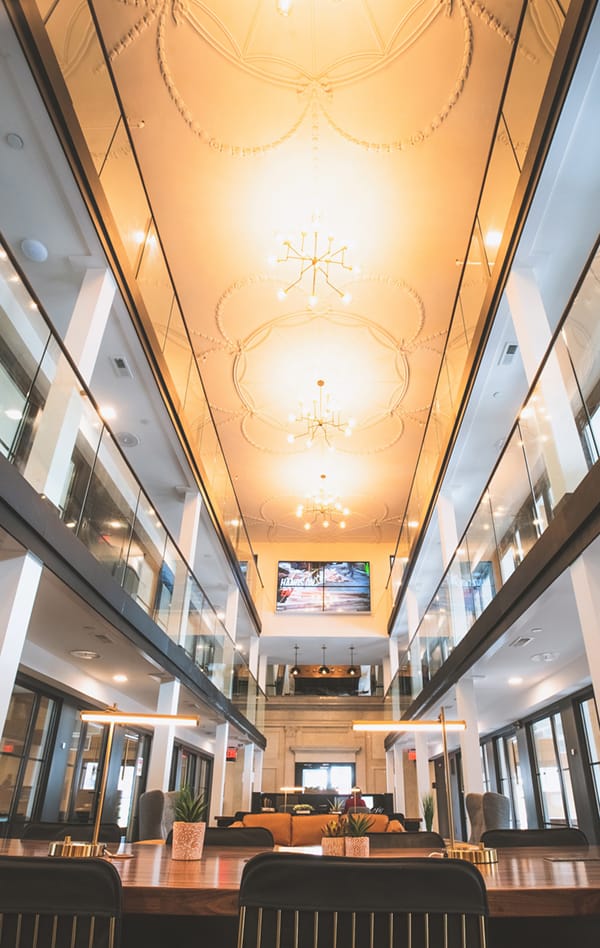
VBC Philadelphia Headquarters – Adaptive Reuse. Photo Courtesy of VBC
The company was a success, but to keep overhead costs low and streamline the process, Logan and her business partner outsourced the manufacturing and transportation of their designs to various Pennsylvania manufacturers. After some time, she was connected with VBC, and the foundation of an enduring partnership was created.
The Shift to Volumetric Building Companies and A Modular First Approach
After providing design services to VBC for a while and developing a relationship with the leadership team at the company, the opportunity arose to increase vertical integration and provide design and engineering services under the VBC banner. Once again, Logan stepped towards the challenge.
While some in the architecture profession might still have walked away from that challenge, for Logan, it was just another opportunity to learn, create, and continue to change how modular construction is viewed by driving design and innovation from within to support VBC’s already existing manufacturing and construction groups.
So far, it’s been a match made in construction technology heaven.
A New Set of Challenges
Tackling something new, even when you have a lot of related experience in the industry, always comes with surprises and new challenges to overcome, and the shift to providing modular design, architecture, and engineering services for VBC was no different.
Even with prior experience in DfMA and industrialized construction planning and delivery, it takes practice, energy, and support to build a team that thinks about buildings and design holistically, creating places and spaces that people want to inhabit while prioritizing manufacturing and construction needs that need to be addressed both at an individual module scale and at larger building scale. But that’s precisely what VBC is doing - designing products and projects to fill their global factories and support local communities.
Another challenge has been recruiting and training new talent, and here again, Logan has taken a best-of-both-worlds approach.
On the one hand, several core members of the design team she’s built at VBC are solid, experienced architects who understand the rules and best practices demanded by the profession.
On the other, she’s been actively recruiting young architects, often through internship programs run by the company, and allowing that diverse mix of established skills and fresh ideas to fuel innovation, invention, and creativity.
It’s not just talent that has been a challenge, though.
As a global leader in the modular building space, VBC designs and builds modular structures in several countries outside the United States. As anyone who has worked in varied locations knows, there are myriad differences – large and small – between construction in one part of the world and another.
Whether it’s something as fundamental as using imperial or metric dimensions or choosing between wood, metal, or something else, every new project brings a unique set of problems that must be solved, and opportunities to seize that must be solved to get from concept to completion.
Advice for Young Architects
Experience, when it’s done right, brings insight, and Logan has gained plenty of that over the years.
As with everything else in her surprising, successful career so far, her advice for young architects initially seems contradictory.

Sharing Insights at World of Modular
Sara-Ann Logan, AIA, RIBA, NOMA, IIDA, Vice President of Design, Volumetric Building Companies
Speaking to Sara.Ann Logan, it’s clear that while she’s always felt privileged to have been given such supportive mentoring by some of the best minds in the architectural profession, she also doesn’t feel like all students are as fortunate as she was.
She would like to see some changes in how young architects gain experience. Specifically, she’d like to see them able to explore more paths, new areas, and corners of the industry and gain varying experience rather than spend years drawing ‘the same old stair details.
’It’s a philosophy that she and the team at VBC have built into their recruitment, HR and workforce development strategy, and it’s what she’s going to be talking about at this year’s World of Modular trade show.
During her engagement at the show, she will be sharing her own experiences and how VBC has adopted a ‘home-grown’ talent philosophy across the larger organization. “You will hear more about how we practice workforce development across the whole spectrum, from trades to professional roles,” says Logan, “along with nuggets of data and the reasoning behind our employee development strategies.”
First, she encourages new architects to learn from every new experience, pay attention to everything happening around them, and absorb information, wisdom, and lessons. Or, in her words, “Be a sponge. Learn as much as possible when starting out in this or any other industry.”
Then, she advocates that they question everything. Because when it’s done properly and professionally, questioning can be both a learning experience and the catalyst for necessary change and improvement.
Logan also wants to see more young architects exposed to different elements of the construction world outside of traditional professional practice.
Because even though the fundamentals of architecture and design largely haven’t changed, our options to deliver them to the world have, and we need a crop of young, trained architects, engineers, and designers who understand not only what the boundaries are but also when to push them to create something new and exciting.


Custom Poolhouse – Hybrid (Modular + Traditional) Design Build. Photo Courtesy of Jared Kuzia
What's Next
It’s probably not surprising that someone who has chosen a less traditional path and, in many ways, is creating new rules along the way, Sara.Ann Logan is not done being a changemaker.
Within the scope of her role at Volumetric Building Companies, she’s found new ways to marry her love of architecture with computer technology, and VBC is rapidly adopting and creating tools and technologies that span architecture, manufacturing, construction, and operations to support their growth, build the future, and improve lives.
The team that Logan leads has been changing the way modular buildings are designed and realized and how the world views them, too, and she’s excited to see how this approach to the construction industry is changing in general, both in terms of how VBC creates and builds its own vertically integrated ecosystem, and in general in the larger architecture, engineering, and construction fields.
“In the future,” says Logan, “I’m hoping to see architects learning to think like builders and builders considering things from a design perspective. It’s this type of collaboration and the increasing interconnectedness of the construction world that is going to make that happen, and it’s exciting to be a part of those kinds of changes.
”Whether it’s delivering comfortable, affordable family housing in Philadelphia or volumetric modular hotels in London, Amsterdam, or New York City, Logan and the team at VBC continue to push the boundaries and find new ways to deliver well-designed, high-quality, accessible spaces - faster, one module at a time.
The future of construction is exciting, innovative, and often modular, and people like Sara.Ann Logan is helping to put this modern, sustainable, speedy construction option front and center, right where it belongs.
About the Author: Tamara Aspeling is a published author and freelance writer who specializes in construction and writes for print and web. She’s also a trained estimator and project manager with over 20 years of industry experience. You can reach her at www.theconstructionwriter.ca or words@theconstructionwriter.ca.
More from Modular Advantage
DORÇE Navigates Mountainous Terrain, Extreme Weather to Help Rebuild Türkiye
The February 6 earthquakes in 2023 were enormous. In response, DORÇE moved quickly, obtaining a government bid to help create housing and multipurpose structures—both temporary and permanent—for earthquake victims and laborers hired for reconstruction efforts.
Modern Desert Oasis: Building Reset Hotel the Modular Way
While the off-site construction part of the Reset Hotel project has been carefully controlled and with every necessity close at hand at BECC Modular’s factory in Ontario, Canada, the remote location of the project site has created additional challenges for the on site portion of the build.
Revisiting Yellowstone Canyon Village—a Groundbreaking Modular Construction Feat—Ten Years On
With such a short building period due to impending cold, it made the most sense for park developer Xanterra to pursue modular. Yellowstone’s high visitor traffic also required some odd transportation scheduling, as traffic from the West Yellowstone entrance determined the times when trucks could unload modules. Guerdon was up to the challenge.
Built for Brutal Cold, This Modular Office Building Shines
Houlton, the county seat of Aroostook County, Maine, is a small town with a population of about 6,000 residents. Situated along the border between the U.S. and Canada, what the town is most known for is bitterly cold winters. When the U.S. Border Patrol needed new office space, a modular building approach from Modular Genius offered the perfect solution.
Panel Replacement Adds Years of Life to Navy Vessel
Panel Built, Inc., recently replaced all the wall and roof panels on a two-story US Navy barge deck house that the company had originally installed 30 years ago, giving the vessel new life. Now, the commanding officer of the unit that uses the barge said the difference between the condition and appearance from when the barge left their facility to when the project was complete was beyond his expectations of what was possible.
True Modular Building Seeks to Revolutionize Housing. It’s Next Stop: MBI’s World of Modular Europe
True Modular Building (TMB) specializes in crafting attainable, eco-friendly, and comfortable build-to-rent (BTR) housing with modern designs and customizable features, ensuring that residents feel at home both today and tomorrow.
From Toronto to Suriname: A Global Modular Building Story
When I AM Gold – a Canadian gold mining operation based in Toronto, Ontario – wanted to expand its mining operations in Suriname, it knew it would also need to expand its infrastructure. More specifically, they needed to build a mechanical services compound that would allow their local crews to maintain and equipment critical to their mining operations. They also knew that it would be a challenge.
There Were a “Sea of Challenges” for this Modular, Island Development
Question: Can modular construction be used to build a series of affordable, unique housing buildings, all styled to look like they were built in 1845, on an
island that caters to the wealthy? The answer is, of course, yes, but how the
team at Signature Building Systems and KOH Architecture got there is quite a story.
America’s Construction Economy: A Race Against Time
If the economy has been able to handle higher interest rates thus far, undoubtedly it will be able to manage the lower interest rates to come. But many economists are pointing out that the Federal Reserve may already be too late to the game. While they gradually reduce interest rates, the U.S. economy could quickly decelerate, at least based on theoretical grounds if not on the most recent data releases, culminating in that long-predicted recession. Only time will tell.
Top Five Benefits of Modular Office Space
Modular office spaces are transforming how businesses think about their work environments. These innovative structures offer a mix of flexibility, efficiency, and sustainability, making them a smart choice for companies looking to gain an advantage.

